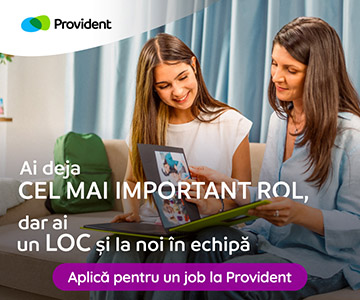Share
Cost or investment? How do you justify the Employer Branding budget?

Any action you take within an organisation will involve a cost. The question is whether that cost remains an expense or can become an investment.
An expense is a one-off action, without continuity and no direct link to business objectives. An investment, on the other hand, is a purposeful action that supports the strategic direction and contributes to long-term growth.
„Cost is the price you pay. Investment is the value you get back."
Actions like providing pizza at the office, the occasional team event, or offering a standard benefits package are not investments in Employer Branding. They might be nice gestures — sometimes even necessary — but they are not investments. On their own, they don’t build a strong, effective, and sustainable Employer Brand. As Jackie Orme, former CEO of CIPD UK, said at a conference in 2008:
„Employer Branding is an essential part of the business strategy, with an impact that far exceeds the boundaries of the Human Resources department.”
Only actions that strategically and authentically support the business can be called an “investment” in Employer Branding.
Employer Branding is a young, evolving field—officially defined only in 1996. That’s why it’s crucial to share clear, straightforward information—not just with communication, HR, or marketing teams, but also with organisational leaders: CEOs, team leaders, managers, and department heads.
The Benefits of Employer Branding
There’s an African proverb that goes: “It takes a village to raise a child.” The Employer Brand is exactly that kind of “child” — a reflection of the environment and culture in which it was nurtured. That’s why it’s the responsibility of the entire organisation to support it.
In turn, an authentic, strategic, and healthy Employer Brand supports the whole organisation. It’s a myth that Employer Branding is just about recruitment. Among the often overlooked strategic benefits are:
- Turnover management
- Attracting qualified candidates
- Improving productivity
- Increasing employee loyalty and engagement
- Budget optimisation
- Knowledge retention within the company
- Enhancing brand visibility, reputation, and commercial value
- Competitive advantage
- Organisational stability
- Time efficiency across multiple departments
- Accelerating and improving business development
- Reducing recruitment costs
- Easing pressure on managers, recruitment teams, and HR
- Faster recruitment processes
However, strategic benefits rarely happen by chance. In many organisations, Employer Branding budgets end up spent on initiatives that look good on paper but don’t really address deeper challenges. The most common Employer Branding actions often involve offering standard benefits, trying out various recruitment channels hoping for miraculous results, and organising symbolic gestures — a team lunch, informal gatherings, or occasional holiday gifts.
All these actions can support an Employer Brand, but they don’t build a true identity, nor do they address current challenges. Most likely, they neither attract nor retain the right people. In today’s labour market, these are minimal expectations rather than genuine differentiators.
A strategic, authentic, and effective Employer Brand is built differently. It has a clear purpose: to create a real connection between people and the organisation. It’s reflected throughout the entire experience — whether as an employee or candidate — and communicates more than just an image: it conveys values, boundaries, expectations, and a promise (known as the EVP), bringing strategic benefits as well as direct savings.
The Role of HR Professionals in Employer Branding
HR plays a crucial role in the Employer Branding equation, but it’s not the only player. HR professionals have direct contact with employees and candidates. They guide, inform, and support, yet:
- They don’t have full visibility of the business direction (local, regional, international);
- They are not responsible for creating the communication, brand, or positioning strategy;
- More often than not, they lack the technical skills or expertise needed to build and implement an integrated strategy (from climate analysis to communication and design);
- They don’t have the time or support required to cover all these responsibilities.
...and they shouldn’t bear this responsibility alone. Employer Branding isn’t just an HR project; it’s an organizational responsibility. It’s an investment in clarity, direction, and long-term building. When done strategically, backed by leadership, and aligned with the organization’s reality, Employer Branding can become one of the most powerful business tools.
How can you demonstrate that Employer Branding represents an investment rather than merely a cost?
1. Education
First and foremost, justifying Employer Branding starts with a clear understanding of what it truly is and the real benefits it brings. Employer Branding isn’t an isolated HR initiative — it’s a collective effort that impacts the entire organisation. Even if you don’t actively invest in it, your employer image still exists — and in most cases, the absence of strategic management ends up costing more than a coherent investment would.
Investing in Employer Branding means taking control of the narrative, aligning Employer Branding efforts with business direction, and dedicating time and resources to build something sustainable. This requires a team — internal or external — with technical know-how and expertise that goes beyond HR: marketing, organisational psychology, communication, strategy.
Employer Branding is still a relatively new field, and the role of Employer Branding Specialist has mostly been shaped from a communication perspective rather than a strategic one. So, we’re not only talking about a specialisation that requires experience across multiple industries, but also about a real lack of specific training among those managing the process.
More often than not, the responsibility falls on the HR department without a true evaluation of what the effort demands — in time, energy, skills, or budget. Building an Employer Brand that genuinely supports an organisation long-term isn’t done in between recruitment cycles or occasional internal initiatives. It’s a process — one that demands strategy, requires investment, but also holds great potential for returns.
2. Visualisation
Secondly, it’s crucial for organisational leaders to visualise the complexity of the process and truly understand what it takes to reach the objectives.
Setting goals often seems like a simple exercise: “We want to reduce turnover by 20%,” “We need 100 candidates in Q2,” “We want more productive employees every Friday.” But what’s often missing is the answer to how to get there. Traditionally, an HR person might ask a manager to talk to the team, identify any dissatisfaction, come up with recruitment ideas, or push harder on Fridays. But are these measures enough? In most cases, no. On the contrary — they can deepen existing issues, perpetuating dysfunctions that become increasingly costly over time.
This is where Employer Branding comes in, with a strategic approach. Not through a one-off recruitment campaign — because in a fragile context, a campaign is just a band-aid on a wound it can’t really cover. The solution lies in a clear plan, built around relevant and aligned actions. The plan might start with collecting real feedback to identify root causes — not just symptoms. Then, specific actions and tactics can be proposed to meet the objectives: a concrete protocol for colleagues showing signs of dissatisfaction, so problems are managed proactively, not after the fact. Expanding recruitment channels, not just ticking boxes for more platforms, but through referral programmes that bring relevant candidates and channels that truly make sense for the roles. In parallel, actions that support team culture and work rhythm: practical workshops, competitions that boost internal spirit, recognition systems, and goals chosen according to what matters to the team — financial or non-financial.
All of this takes time, expertise, and investment. Feedback forms must be designed, implemented, collected, and analysed. Referral programmes need promotion, and new channels must be selected strategically. Workshops and internal initiatives don’t just happen: they have to be organised, communicated consistently — visually, verbally, in writing — and adapted to the audience and organisational context.
In many companies, these processes can’t be managed internally for the reasons already mentioned: lack of time, expertise, and a dedicated team. But this only becomes clear when the whole process is visualised.
3. Calculating Return of Investment (ROI)
Thirdly, leaders and decision-makers will always want to understand the return on investment. Employer Branding must be an informed choice, supported by clear figures. In the service sector, results are closely tied to direct experience — the teams involved, the expert who designs and implements the plan, and the organisation’s level of engagement. Therefore, there is no universal ROI.
However, we can talk about general benchmarks. From my experience and that of the clients with whom I’ve built strategic Employer Brands, small and medium-sized companies (with over 50 employees) typically allocate between €50,000 and €90,000 annually. For larger organisations with over 250 employees, investments can reach several hundred thousand euros per year — focused on coherent, strategic brand building.
Budgets vary depending on objectives and each organisation’s specifics, but the trend is clear: strategic investments in Employer Branding generally yield a positive return. In my experience, companies I’ve worked with have reported an ROI ranging between 3 and 16 within the first two years. In other words, for every euro invested, between 3 and 16 euros have been generated or saved — depending on the organisation’s level of involvement, commitment to brand building, and the expertise of those managing it.
ROI Formula and Calculation by an Expert
There is no universal Employer Branding ROI formula. Each company or expert may track different indicators based on the organisation’s specifics.
In my work, I use a simple formula developed with colleagues at Fuzzer and through collaboration with over 20 employers: (direct benefits + strategic benefits) / annual investment in Employer Branding, with values determined by key indicators: cost per employee, replacement cost of an employee, set objectives, and a realistic one-year impact that the Employer Brand could have.
If you want to see how this looks for your organisation, you can ask a representative from Undelucram to connect you with us, so we can help you out.
Signed,
Diana A. Hart
Brand Strategist and Fuzzer Co-founder, boutique brand management agency
Read all the articles about
Why? Human behaviour Leadership concepts Leadership skills Ethics Legislative Workforce planning Human behavior Organizational excellence Employee experience Employer branding HR Metrics HR CoachUndelucram.ro Contributor

Diana A. Hart
More articlesComments
0 comments

Access your account and add your comment
Why?
Subscribe to the Newsletter
Read articles of interest from Undelucram.ro contributors





